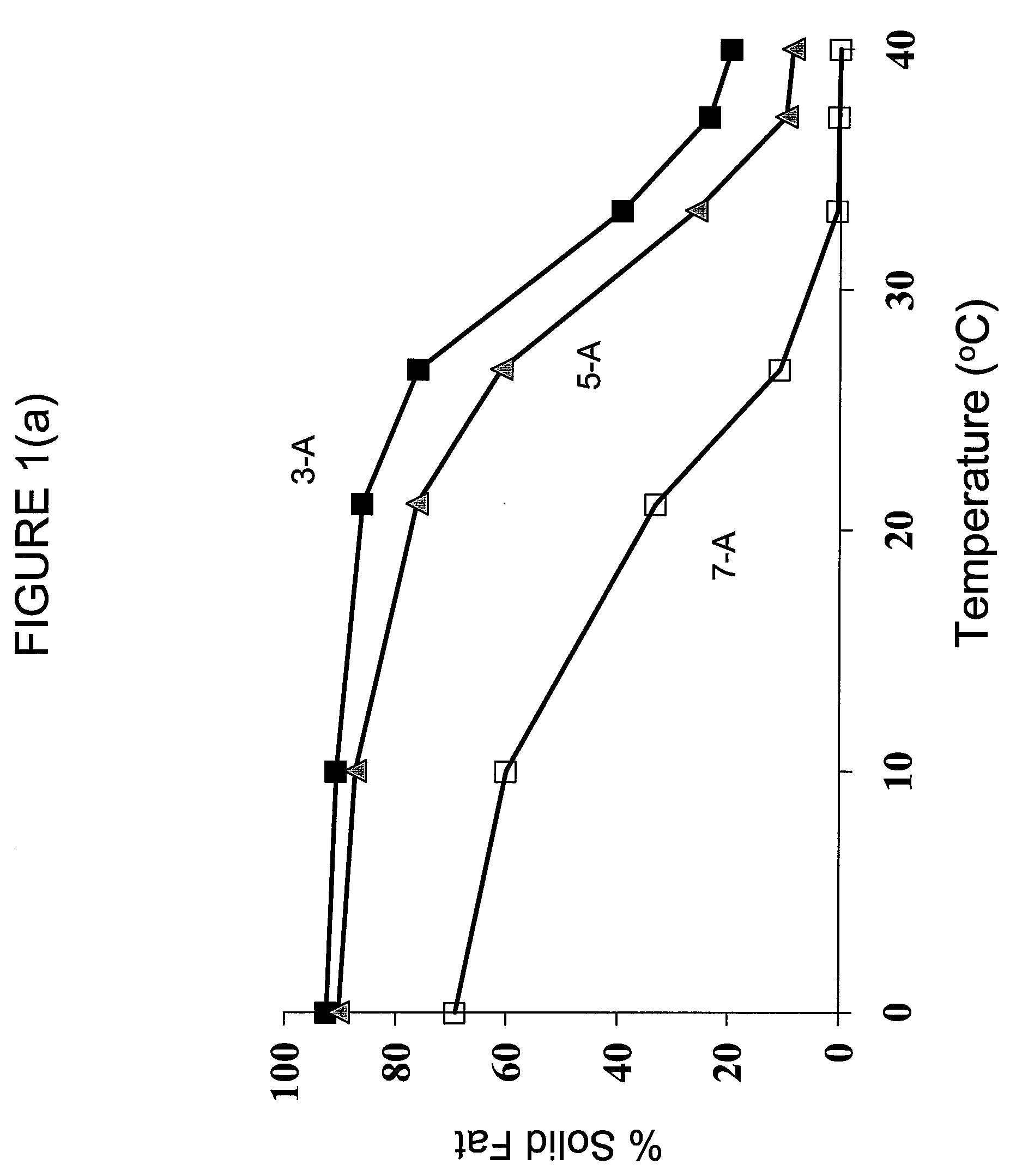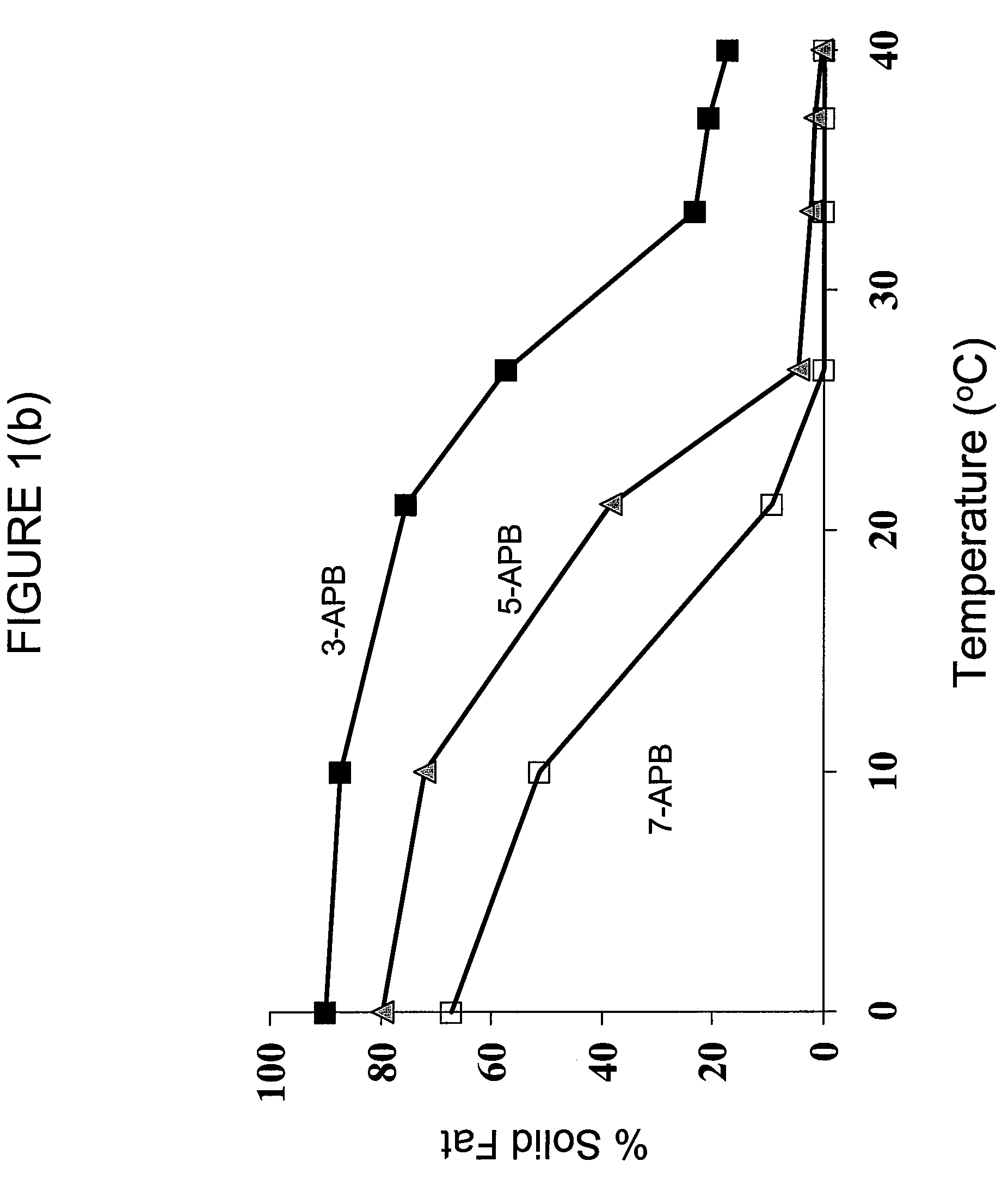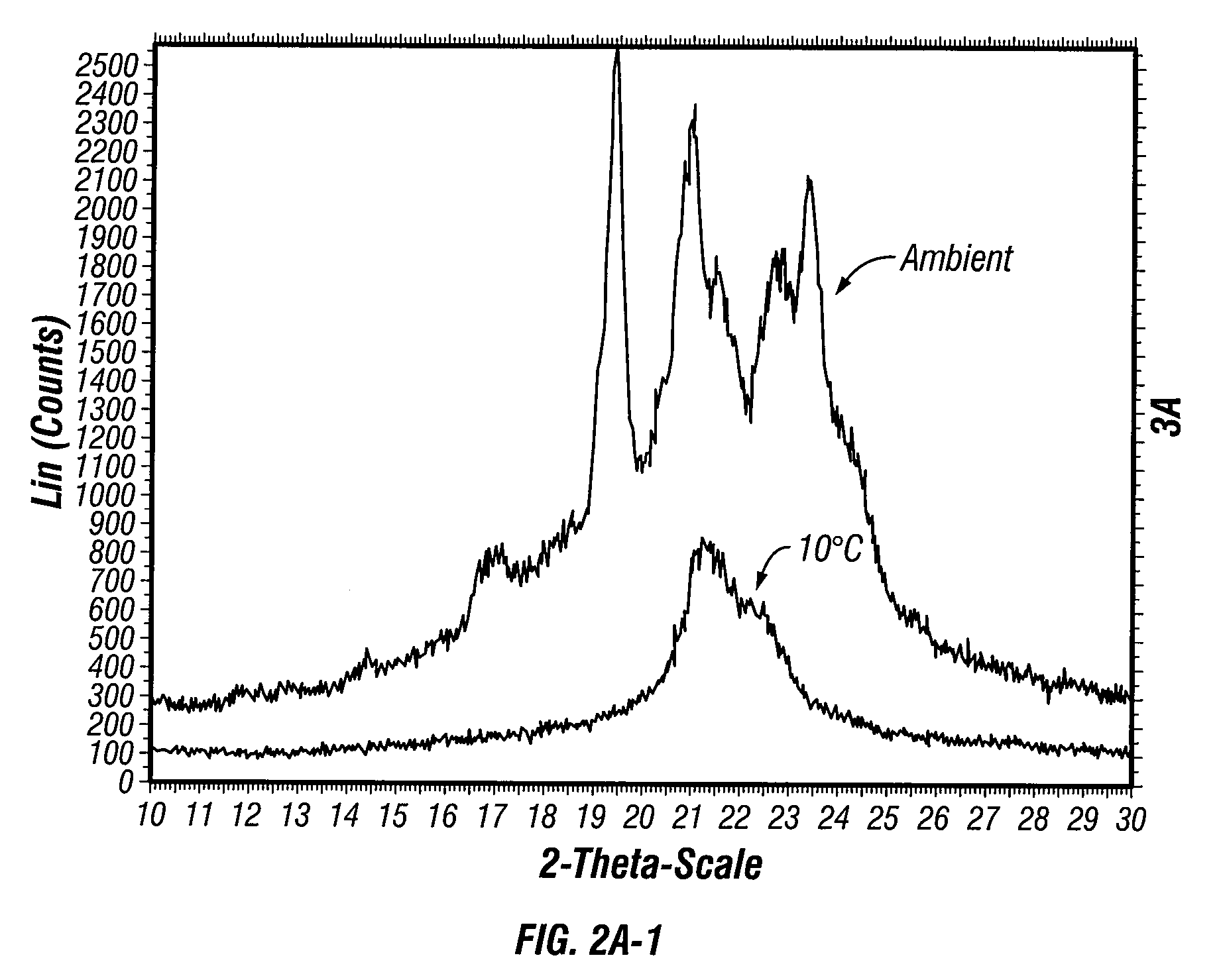Structured glycerol esters useful as edible moisture barriers
a technology of glycerol esters and glycerol esters, which is applied in the direction of food products as barrier agents, edible oils/fats, food shaping, etc., can solve the problems of compromising quality, stability, organoleptic properties, and food products can seriously compromise quality, color, texture, and nutritive value, and promote deleterious changes in flavor, color, texture and nutritive value of food products
- Summary
- Abstract
- Description
- Claims
- Application Information
AI Technical Summary
Benefits of technology
Problems solved by technology
Method used
Image
Examples
example 1
Six different structured glycerol ester compositions were prepared via base catalyzed interestification using six different combinations of triacylglycerols reactants bearing “MMM,”“LLL,” and “SSS” fatty acid residues, as defined in Table 1 below, as reactants.
TABLE 1ReactantsIdentity of Reactants“SSS”Series “A”: TriacetinSeries “APB”: 1:1:1 equi-molar blend of triacetin,tripropionin, and tributyrin“MMM”NEOBEE ® M-5 (Stepan Co. (Northfield, IL))(~70% C8:0, ~30% C10:0)“LLL”Fully hydrogenated soybean oil in flake form(Fuji Oil Co., Ltd.)(~11% C16:0, ~89% C18:0)
To produce the structured lipids, a mixture of triacylglycerols bearing “SSS,”“MMM,” and “LLL” fatty acid constituents were combined in the ratios defined in Table 2 below. The reactants were heated to 100-150° C. under vacuum to remove traces of water and randomly interesterified in the presence of about 0.1 weight percent anhydrous sodium methoxide to initiate the randomization reaction. After 30-60 minutes, the reaction mixtu...
example 2
Interesterification reactions were carried out on four blends of short (SSS), medium (MMM) and saturated long (LLL) chain triacylglycerols using essentially the same procedure as described in Example 1. The relative molar ratios of these reactants and various properties of the resulting products are given in Table 4 below.
TABLE 4Molar Ratios of Short, Medium and Saturated Long Chain Acidsin Reactants and ProductsMolarProductsRatios of ReactantsT deod.NO.SSS*MMMLLL(° C.)[M] / [S][S + M] / Lkcal / g15.76.31.02102.554.688.7725.76.31.02603.772.937.6039.72.31.02100.621.616.1148.63.41.02101.012.206.49*Triacetin
After refining and vacuum steam deodorization, each of the SGE materials was assayed for caloric bioavailability in an animal feeding study. The study employed young (˜100 g) rats randomly assigned in groups of ten each to different diets. A baseline group received excess food, and the amounts consumed each day were recorded. A restricted group was started on a one-day delay. The restrict...
PUM
 Login to View More
Login to View More Abstract
Description
Claims
Application Information
 Login to View More
Login to View More - R&D
- Intellectual Property
- Life Sciences
- Materials
- Tech Scout
- Unparalleled Data Quality
- Higher Quality Content
- 60% Fewer Hallucinations
Browse by: Latest US Patents, China's latest patents, Technical Efficacy Thesaurus, Application Domain, Technology Topic, Popular Technical Reports.
© 2025 PatSnap. All rights reserved.Legal|Privacy policy|Modern Slavery Act Transparency Statement|Sitemap|About US| Contact US: help@patsnap.com



